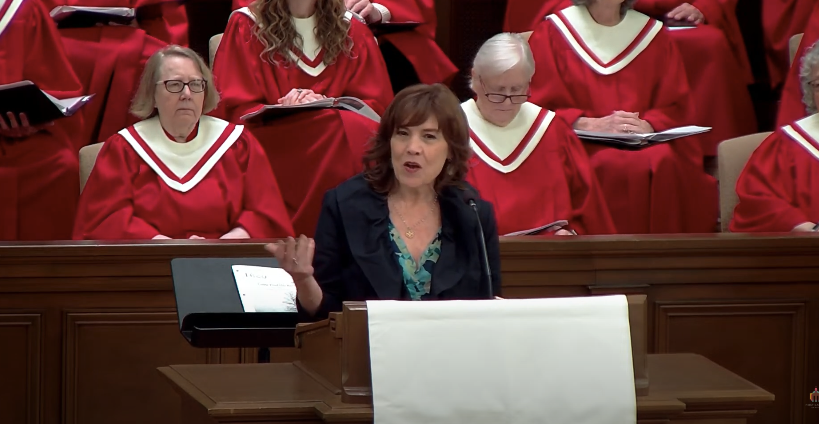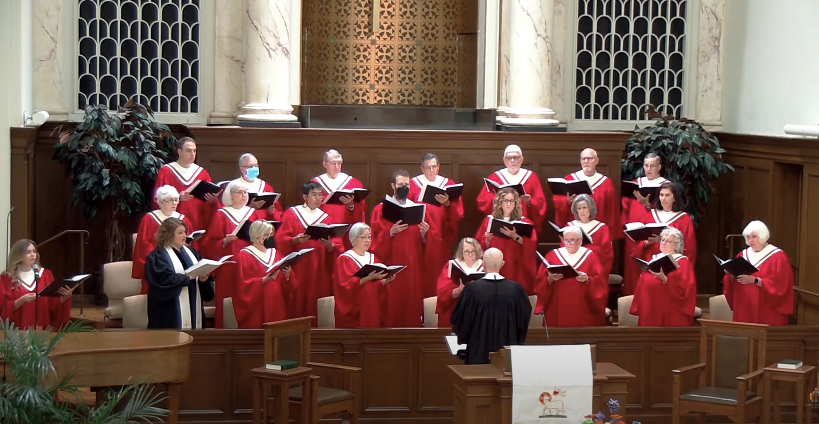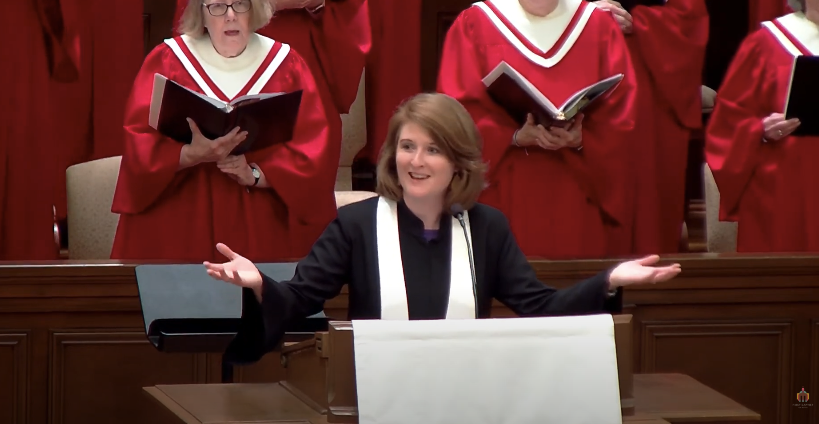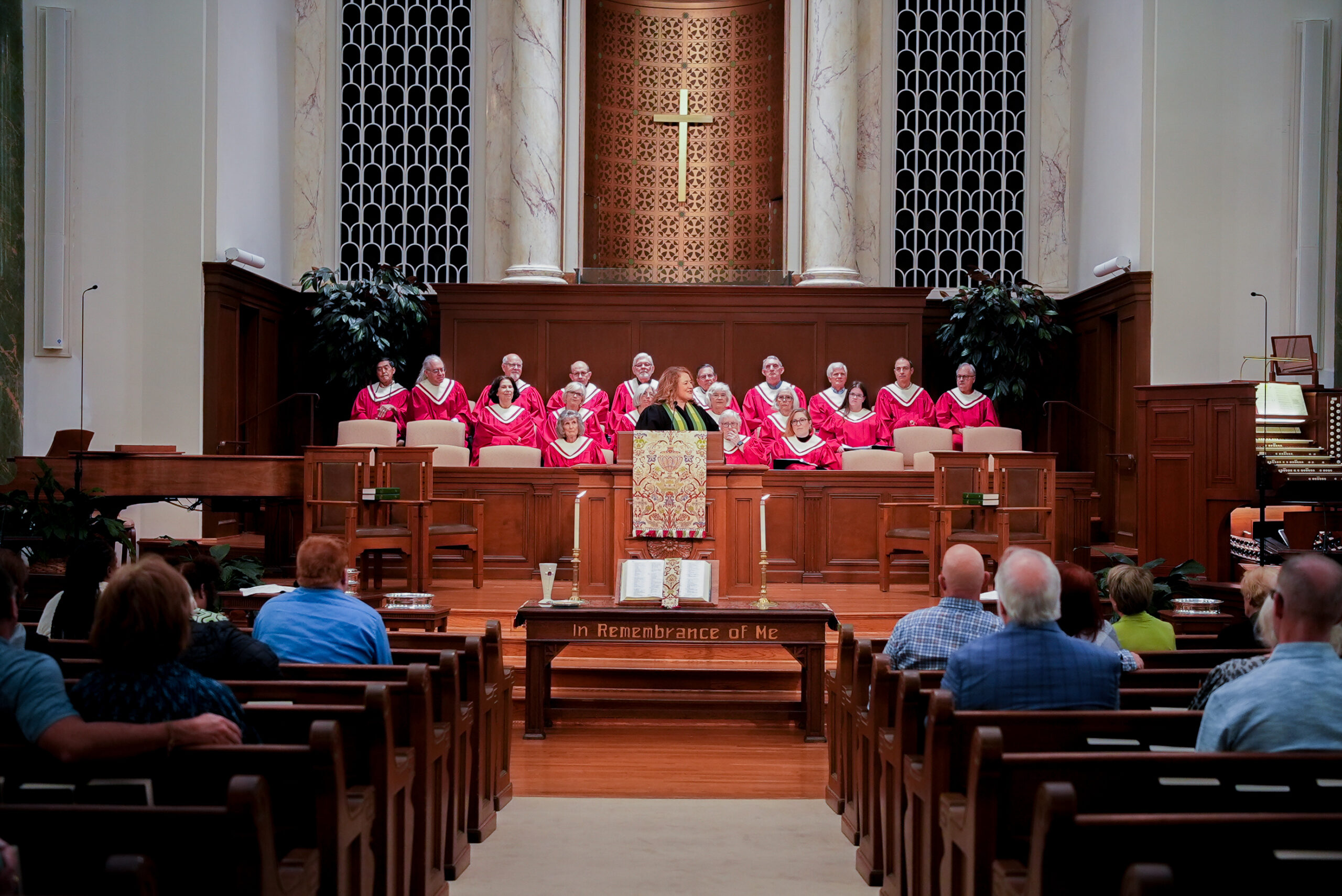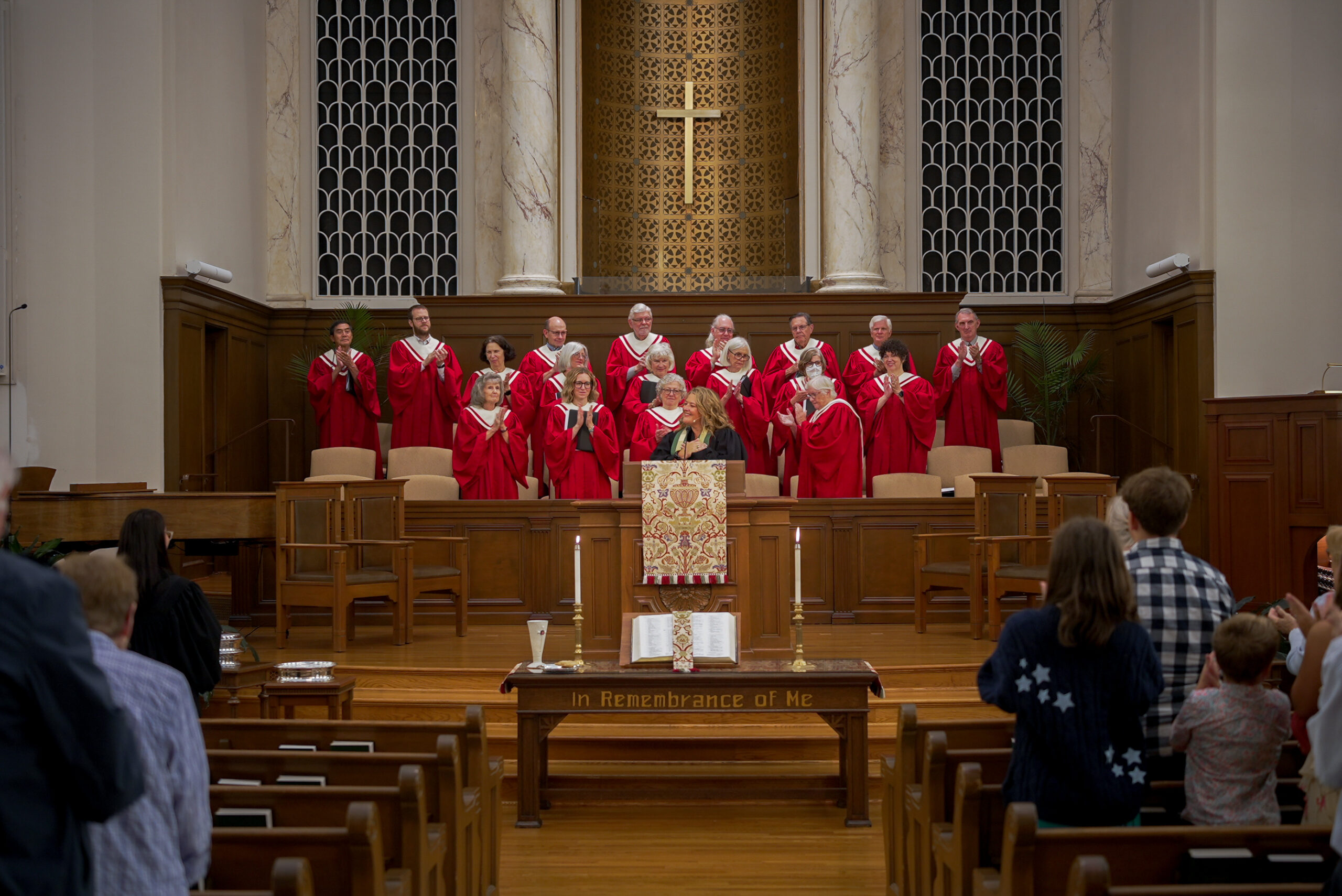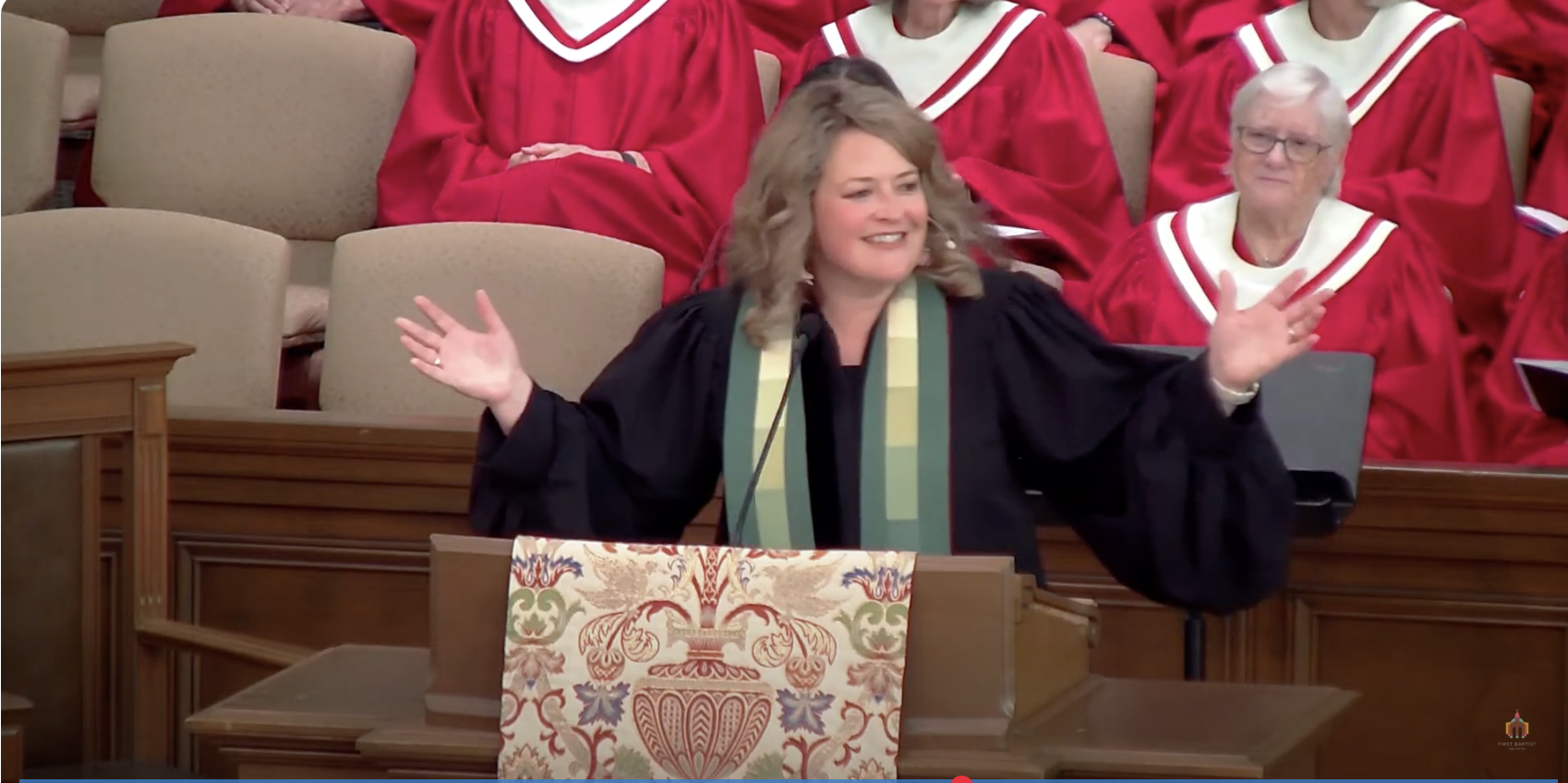II read this week a story from Smithsonian magazine about a travel
writer from the early part of the 1900s who loved to tell strange stories. One
of his favorites was a story about a man who, while traveling far from home,
fell into a cataleptic state in which everyone around him assumed him to be
dead. They carried him to the town’s undertaker, who fitted him for a coffin,
put the lid loosely on top, and then left to go home and eat his dinner.
Well that night in the middle of the night, the supposedly dead man
woke up. He sat up, looked around, tried to figure out where in the world he
was, and discovered, of course, that he was in a room full of coffins. He got
out of his, and began pushing the lids off one, then another, and another after
that, only to find nothing – and no one – inside. After awhile, he said to
himself, “my Lord, I have been late all my life, and now it turns out that I’ve
missed the resurrection!”1
IIWe gather today on this week after resurrection Sunday – a week after
the lilies were fresh, and the cross was flowered, and the outfits were new,
and the bells rang, and the Sanctuary was full. And every year in the Christian
lectionary, that rhythm of texts and movements that anchors a three-year
cycle of worship, the Sunday after Easter offers this two-part story: first, of
the terrified disciples, locked in their room on Easter night and surprised by
the risen Jesus who breathed life into their fear; and then, of Thomas, who, a
week later, still wasn’t convinced of his friends’ stories and was surprised by
the wounded Christ.
On the night of Jesus’ resurrection, his disciples were crowded into a
locked room paralyzed in their fear. Their bellies still churning with the shame
and the grief of Friday, but their eyes alive with the rumors they’d heard from
Mary. And right there in their midst came an old-yet-new Jesus appearing
among them bearing words of calm and forgiveness, “Peace be with you.” It’s
no accident that the first thing Jesus does is to show his wounds — extending
nail-scarred hands, and showing his pierced side. And wounds lead to
recognition! Amidst their surprise, Jesus offers peace again and breathed
upon them the Spirit of life.
And then Jesus came to Thomas. Oh Thomas, that is, the one history
has called “Doubting.” I’ve always thought Thomas to be the “I do my own
research” guy, the 5 on the Enneagram, the investigator, the one who refuses
to be hoodwinked. So when eleven of his closest friends tell them about the
resurrected Jesus, no matter how much he trusts them or loves them or
believes them, he’s the one who has to see for himself. “Unless I see the mark
of the nails in his hands, and put my finger in the mark of the nails and my
hand in his side,” Thomas says, “I will not believe.” Because he wasn’t there at
the cross, and didn’t see the nails driven into his Lord’s hands, and didn’t hear
the thunder roll as Jesus breathed his last, and didn’t feel his presence in the
garden, he has to experience Jesus himself, otherwise he wonders if he’s
missed the resurrection. He’s the Thomas that the Gospel of John calls “the
twin,” about which Frederick Buechner says, “if you want to know who the
other twin is, I can tell you. I am the other twin, and unless I miss my guess, so
are you.”2 Oh yes, we know Thomas.
Like with the disciples before him, the pattern repeats. Jesus extends
peace and then invites Thomas into his wounds. Put your hands here, he says,
look at my hands,see for yourself, trusting the wounds all the while to tell the
story of new life. Jesus didn’t say, “just believe because I told you to,” rather
he understood precisely what Thomas needed and instead beckoned him,
“put your hands right in my wounds.” Jesus didn’t ostracize Thomas, saying,
“your doubt makes me think less of you,” or “doubt has no place near me,” or
“doubt means you’re not really one of my followers,” rather he went straight
to Thomas and honored that doubt with an experience that changed
Thomas’s life. Again: the wounds lead to recognition. “My Lord and my God!,”
Thomas says, finally seeing for the first time.
IIIChristian theologian N. T. Wright wrote a little book about resurrection
called Surprised by Hope, where he examines the question: how do we know
what we know? From the Enlightenment to now, he tracks the modern path of
knowing for those of us living in the Western world, a knowing that just
doesn’t give room for questionable things like resurrection. Because things
like that just don’t happen. There’s no evidence! There’s no science! As he
says, “If you can’t see it, touch it, weigh it, or measure it, it isn’t true or real.”3
But somewhere along the way, Christians began to equate belief with
certainty, forgetting that in Greek and Latin, “belief” means “to give one’s
whole heart.” Somewhere along the way, we fooled ourselves into thinking
that we’re not faithful if we have questions, or we’re not strong enough if we
hold the God’s story of love up against every loss, every grief, every trauma,
every horror of this world and see if we’re found wanting. Somewhere along
the way, we fooled ourselves into thinking that if Jesus should be at the
center of our public life, then we needed him unblemished by battle or
sanitized from suffering – stripping away his real, raw human scars and
making him the strongman who muscles people into submission. Somewhere
along the way, Christians and churches decided they needed to be shiny – too
shiny, if you ask me – too polished, too perfect, too obsessed with victory and
winning, too unwilling to be honest about one’s wounds, too uninterested in
sharing the burdens of another’s, and in turn, have moved past, covered up,
papered over the real hurt that has come from within. Somewhere along the
way, we forgot that God doesn’t dismiss our doubts or sufferings, but rather
understands that it’s precisely through those doubts and sufferings that we
can actually believe!
Thankfully, these early glimpses of a resurrected Christ weren’t
saddled with thousands of years of what Christianity has defined as “belief.”
They didn’t wield the heavy hand of power or the chisel of the state. They
didn’t come cloaked in patriarchy or offered with a side of consumerism. They
weren’t loaded with American evangelical Christian culture centering
questions like “have you asked Jesus into your heart?,” and “have you been
saved?,” and “what would Jesus do?” They didn’t expect the formula that
believing + behaving = belonging, or that the right way to believe included a
30-minute morning quiet time, easy black and white answers, the Roman
Road, and a placid, unquestioning life of faith. They didn’t layer on the
expectations that “belief” meant total adherence to the purity of
denominational creed or inherited doctrine.
No! These first encounters with Jesus were flesh-and-blood
experiences, with people whose faces were still stained with tears, whose
fear invaded every moment, whose hope seemed entirely lost. To weeping,
pleading Mary, to the numb yet loyal women first to the tomb, to the terrified
Twelve over ordinary bread and sacred word, to the wandering disciples
walking aimlessly to Emmaus, to Simon Peter paralyzed by his shame, Jesus
showed up. And belief – giving over one’s whole heart – emerged by way of
surprise. In each gospel, Jesus appears – wounded yet whole – to a grieving,
confused, fearful friend, the encounter unfolds, they’re surprised as they
recognize him, and believe. “My Lord and my God!,” Thomas says. The
surprise of recognition.
That Jesus came back in body and not just in spirit is essential for
understanding what resurrection means, what belief means, what Jesus
means. That Jesus returned with wounds still visible means Jesus meets us
right there, as he did with Thomas before us, with kindness and knowing, his
new life forever a life bearing the mark of death. That Jesus invites belief
from those surrounded by community means Jesus knows sometimes we
need the community to believe with our whole hearts when we ourselves
wobble. That Jesus connected his wounds to his story means he knows we
do too.
IVIt’s no surprise to any of us that we know Thomas, because this story of
wounds and doubts, of fear and experience is our story too.
We know what it feels like to struggle to believe, to be in such anguish
that we remain stuck for fear of what we’ll encounter. We know the crisis of
trust, even in those who know us and love us best. We know that our wounds
lock us inside rooms of abandonment, despair, fear, indifference,
codependence, neglect, oppression, rooms we never think we’re free to leave.
Yet if Thomas’s story can encourage us at all, may we be encouraged by
this: Faith isn’t the absence of doubt or the presence of certainty. Jesus is not
asking us to feel confident that we have it all figured out, or to act like we
don’t have any questions or concerns. Quite the opposite, actually. Rather,
faith is the courage to not be paralyzed by either doubt or certainty, to step
out of the locked rooms of our lives with curiosity for what we might find.
Faith is trust, the fierce hope that allows us to trust the blowing winds of the
Spirit to propel us from what chains us toward what sets us free.
So I wonder: what locked rooms are you terrified to leave?Is the risk
greater of being stuck inside or being free? What wounds of yours might you
now approach with gentle curiosity? What wounds of this world might you
bear witness too, place your hands to, touch the heart of as an act of faith in
the crucified and resurrected Lord?4
“What Easter does,” N. T. Wright says, “is open windows of the mind
and heart to see what really, after all, might be possible in God’s world.”
So to every one of us whose wounds mark us but do not end us, Jesus says
this: “Blessed are those who have notseen and yet have come to believe!”
Let’s not miss the resurrection, friends! Let’s receive the breath of
Christ and let it send us forth. Let’s allow our wounds to find healing even as
they offer healing to others. Let’s move from being paralyzed with fear to
surprised by hope. Let’s discover what might be possible in God’s world.
I’ve told you before of Dr. Allan Boesak – humanitarian, theologian and
leader in South Africa’s anti-apartheid struggle – who imagined what it will
be like when our own resurrected bodies stand before God. “One day,” he
says, “God will say to us welcome into my kingdom… [now] where are your
wounds? And we will say, we have no wounds. And God will say, did you find
nothing worth fighting for?5
My Lord and my God!
Amen.
